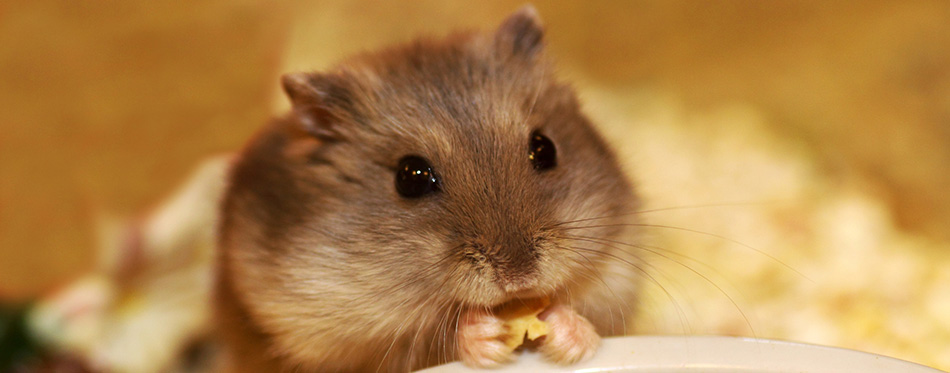Hamsters are adorable little pets with big personalities. They are often considered to be an ‘entry’ pet for families with young children. It is a great way to introduce little ones to the responsibilities of caring for an animal but they are not as demanding as a cat or a dog. They also stay in one place because you keep them in a cage!
Nevertheless, it is important that you think carefully about the costs involved in buying and keeping a hamster and that you are certain that your family budget will be able to cope. It is not fair to take on a pet that you cannot afford.

Upfront Costs of Getting Your Hamster
The first cost will be the purchase of your little furry friend. There is a lot of variation in hamster prices between pet shops and breeders. Some breeders are more expensive than pet shops but you may get a healthier hamster. However, there are no guarantees. Also, some hamster species are more expensive than others.
The larger hamster breed is the Syrian hamster which can cost anything from $5 to $20 each. They like to live alone so you would normally only buy one of these. They live for around two or three years.
The medium-sized breeds such as the Dwarf Campbell Russian hamster, the Dwarf Winter White Russian and the Chinese hamsters typically cost between $4 and $13 but they are usually sold in pairs at a cost of $15 to $20. They live anything between two and four years.
The smallest breed of hamster is the Roborovski hamster which cost between $13 and $30 dollars. They are happy to live as pairs and a couple of them would cost around $50. They live for around three or four years.
You may also like our articles on How to Clean a Hamster Cage Properly and Hamster Body Language: How do Hamsters Communicate.
Upfront Costs of Getting Hamster Equipment
Of course, you have to do a lot more than simply buy a hamster! Your little pet will need a cage where they can feel safe but also get some mental and physical stimulation. Most hamsters will share cages but Syrian hamsters must live alone. Hamster cages can be very basic or very palatial and the costs vary accordingly.
You will also need toys, a hamster wheel, something for them to chew, bedding, food, a bowl to put food in and a water bottle. Added all together, you should probably budget for about $200 as an initial outlay. You should not skimp on costs here because it will just cause you more hassle in the future. You must, for example, get a strong and chew-proof cage or you will have a lot of escape attempts to deal with. You should get an exercise wheel with a solid surface to prevent injuries to little feet. You should buy a good quality pelleted food which is preferably the same that your pet was eating before they came to live with you. By investing in hamster bedding, chew sticks, nesting material, and suitable toys for hamsters, you will have a happy hamster who will be healthier and who will have a longer lifespan.
There are some ways in which you can cut some costs of the initial equipment. You can use your own items as chewing blocks – any unpainted and unvarnished wood blocks will do. Used toilet paper rolls make great places to play and hide. You can even use unscented and undyed toilet paper as a bedding and nesting material.

Ongoing Costs of Keeping a Hamster
Now that you have your little pet settled at home, a lot of the care and attention that they need is free. They need fresh water daily and they thrive on human company. Syrian hamsters, in particular, will get very attached to a family member that talks to them every day and gets them out of their cage for a cuddle. That costs nothing!
There are, however, other things that you will have to pay for. In the wild, they would live off fruits, nuts and seeds. Pelleted food is fairly expensive but it is the best hamster food available to keep your hamster healthy. It is nutritionally balanced and your hamster does not need much more food than that. You will probably be able to get a bulk hamster mix for between $3 and $12 per bag which lasts for over a month. It is also advisable to give your hamster very small quantities of fresh foods (less than half an inch a day) such as broccoli, raisins and cucumber.
Obviously, you will have on-going bedding costs and the costs of replacing toys. There may also be on-going veterinary bills. Before you bring your hamster home, it would be sensible to locate your local hamster expert vet. Not all vets specialize in small animals and you need one that is experienced in working with hamsters. Examination costs are very variable but an annual checkup is a good idea. Hamsters do not need regular vaccinations or parasite treatments in the same way as dogs and cats do. However, they can get respiratory problems, issues with diarrheal diseases and dental problems. Often these problems are caused by diet and inappropriate care and your vet will be able to advise you what should be changed to improve your hamster’s health.
Hamster teeth can be especially bothersome! They never stop growing and in the wild they would be continually worn down by gnawing. However, in captivity, they can grow too long and you may have to visit your vet to get them trimmed back to a reasonable length. If your hamster has developed a respiratory infection or diarrhea, your vet may prescribe them some antibiotics to help fight an infection and there will be a charge for that. However, you will be able to take it home and administer the treatment yourself.
On the whole, hamsters give a lot more in love than they cost and make an ideal pet for families with children of all ages.
Source:
- How Much Does a Hamster Cost? – PetMD

